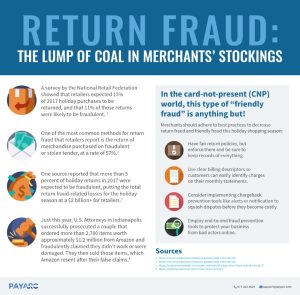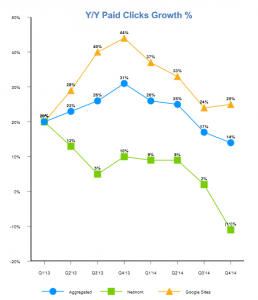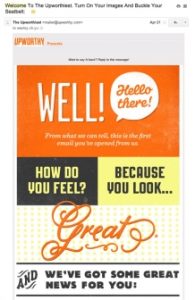If you’ve ever shopped for new wallpaper, you can relate to how difficult it might be to buy it online. It’s something you really want to see in person before you’re comfortable putting up on your walls.

For Graham & Brown, a high-end wallpaper company, the natural consumer desire for a tactile shopping experience is a challenge to their ecommerce ambitions. Especially since a full 70% of the retailer’s online traffic comes from new visitors.

To inspire confidence in this segment, Graham & Brown tested a welcome message designed to reduce the perceived risk of buying wallpaper online. The message was served through a lightbox and promoted the company’s free delivery and free return policies. The lightbox had a positive impact across the board. It delivered a 7.1% increase in add-to-cart rates and a 14.5% boost to new-visitor conversion rates.

Traditional conversion-rate optimization “experts” tell you that if you want to improve the performance of your ecommerce platforms, you need to focus on one metric at a time. Add-to-cart rates seeming sluggish lately? Optimize your product-detail pages or the quick-shop functionality on your category listing/product index pages, they’ll tell you.
Graham & Brown takes a different approach.
Add-to-cart rate
Healthy add-to-cart rates are another key ecommerce metric to track when your goal is optimizing for new and returning shoppers. You should focus on the following broad categories:
- Discovery. Did the shopper find the product they were looking for?
- Fit. Were they convinced the product will meet their needs?
- Confidence. Is their customer feedback to reinforce their decision?
- Reliability. How fast will they get it?
- Convenience. If they don’t like it, how easy will it be for them to return?
The key takeaway from the Graham & Brown example is the fact that the lightbox only really addressed the confidence problem. But, as it turned out, highlighting an easy and convenient return policy had a big impact downstream, as demonstrated by the big positive impact on add-to-cart rates and conversion rates.
It’s all about providing the optimal message, at the right time, to the right person.
When optimizing add-to-cart rates, keep in mind the overall effectiveness of the rest of your ecommerce machine. In particular, consider:
- Is your site search intuitive?
- Does your navigation make sense?
- Are you highlighting specific product attributes like new arrivals, top sellers, and/or customer top rated on category/index pages?
Prioritize your efforts by analyzing your current performance. The following questions can help guide you, too:
- Are enough shoppers making it far along down the conversion funnel (i.e. to a product detail page)?
- Are customers not even getting to category and index pages?
- Are you driving lots of traffic to your product pages and not only seeing a high bounce rate but also a very low add to cart rate?
Once you understand the driving force behind the underperforming metric, you can craft a line of attack. If you don’t take the time to fully diagnose the issue, you’re just wasting resources on changes that may not actually change shopper behavior. Not only that, but you and your team will become frustrated if time and time again you are met with less-than-compelling results—all because you were focussing on the wrong thing.
For more ideas about how to optimize the shopping experience for new and returning users and full ecommerce benchmarks for Q4 2015, download the latest EQ.
Digital & Social Articles on Business 2 Community
(50)






